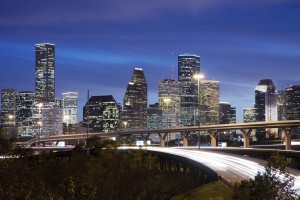Generic
Building tomorrow’s cities, today
Share this post:
 In a June 2013 Le Soir interview, Benoît Lutgen (CDh) proposed a solution to the demographic challenges facing Wallonia (an estimated 400,000 additional inhabitants in the next 10-15 years). “Let’s build a revolutionary, new city; innovative in […] mobility, energy conservation and the use of new materials.”
In a June 2013 Le Soir interview, Benoît Lutgen (CDh) proposed a solution to the demographic challenges facing Wallonia (an estimated 400,000 additional inhabitants in the next 10-15 years). “Let’s build a revolutionary, new city; innovative in […] mobility, energy conservation and the use of new materials.”
Friedl Maertens, IBM’s Business Development Public Sector, disagrees – at least with the first part. The problem with addressing population growth with new building projects, she says, is that it disregards the core challenges of our changing world: Improving energy and water use, waste management and mobility in our existing cities. “From an ecological point of view, constructing new cities while demolishing parts of old ones is simply not acceptable. But it also just shifts problems into the future. Instead of building more cities with our current mindset, why not focus instead on how to improve existing city architectures with a totally new mindset?
Her vision follows two key lines: First, creating a new model of civic living to meet the spatial requirements of growing populations. Second, improving efficiency around energy, waste and mobility to handle the infrastructure burden it will bring.
A new social model of civic living
“All cities want more density in their housing,” says Maertens, explaining how we can accommodate growing populations in the future. The answer could be a new social model involving more co-operatives with communal living spaces, gardens and kitchens, or even increased co-habitation.
“Moreover, we need to look at ways to order space more efficiently – developing shared assets within our buildings or designing our homes more ergonomically to eliminate unused space.”
More efficient cities
Such a cultural shift will take time. But there is much more we can already be doing today. With trillions of objects in the world carrying telemetry, IBM’s ‘Smarter Planet’ vision is to create a world in which institutions and governments capture and centralize all that electronic data in interconnected databases, and turn it into intelligence to improve our lives and create smarter societies. “Smarter Cities” is a vital component of the vision. A growth in populations will mean more strain on all our resources and IBM’s current work in the area spans everything from the granular to the grand. “At a microscopic level, the center of a city is the individual household. A household – or an office – can always do more: occupancy-sensing lights; smart energy meters; water-flow sensors.”
Zooming out, the building is part of a neighbourhood. “We know that equipment performs optimally when there’s stable consumption. So if we instrument a whole group of buildings to provide real-time data, we can monitor when residents are at home and distribute energy and water accordingly. By pooling real-time data from these buildings into a central, automated management system, we can cut everybody’s bills drastically.”
Improving the wider infrastructure
Smarter Cities can zoom out further to streamline the whole urban infrastructure. IBM’s ‘Smart Grids’ have already transformed the one-way flow of old energy networks: We don’t just consume energy from grids now, but also send it back. A revolutionary IBM project in Denmark has been striving to prevent surplus energy from windmills being lost during peak production times by transferring it into the batteries of electric vehicles. When plugged in at the car’s destination, the energy can then be returned to the grid as required.
The smartphone revolution offers immense potential here. With better grid-management, a householder might get smart information when energy consumption is at its lowest.
For truly ambitious cities, there is city-wide management. Rio de Janeiro, hosting the 2014 World Cup and the 2016 Olympic Games, has sought to mitigate the chance of floods and landslides occupying emergency services during the competitions. Working with IBM, they have developed prediction software and early-warning systems, so that people in flood-risk areas can evacuate quickly; road systems to allow traffic lights to be coordinated; healthcare telemetry, so that ambulances can go to hospitals with highest availability; and a full-scale integration of police, fire and medical emergency services with coordinated data intelligence dashboards.
“By 2050, eighty percent of the population will live in cities,” says Maertens. “Planning and implementing urban changes can take 20 years or more. So cities need to start now. With all of the world’s instrumentation, we can make people better informed. Better-informed people make better decisions – reducing waste, improving efficiency and enabling the whole world, and its cities, to do more with less.”
Automate work and accelerate business growth
Many companies need help to navigate the rapid changes that define today’s business environment. To improve their responsiveness and flexibility, they are looking for new ways of conducting business, rethinking their processes, and investing in digital transformation projects to increase the robustness of their operations. They rely on business automation technologies to cut out repetitive […]
Sustainability and the technologies enabling the transition
Creating a sustainable future demands significant technological innovation to decarbonize society, restore biodiversity and ecosystem health, foster thriving oceans for sustenance and economic growth, remove atmospheric carbon, transition to sustainable agriculture, and advance eco-friendly cities that align with our vision for a better future. Generative AI has achieved much in recent years and now surpasses […]
Technology in action at Think Summit 2021
Covid 19, the energy transition and climate change require business agility… right away! Organizations that are slowly starting their digital transformation are irrevocably overtaken by competitors: companies that can quickly realize new, sustainable business models with a remote workforce. How can organizations leverage innovations such as AI, machine learning and hybrid cloud to make […]



